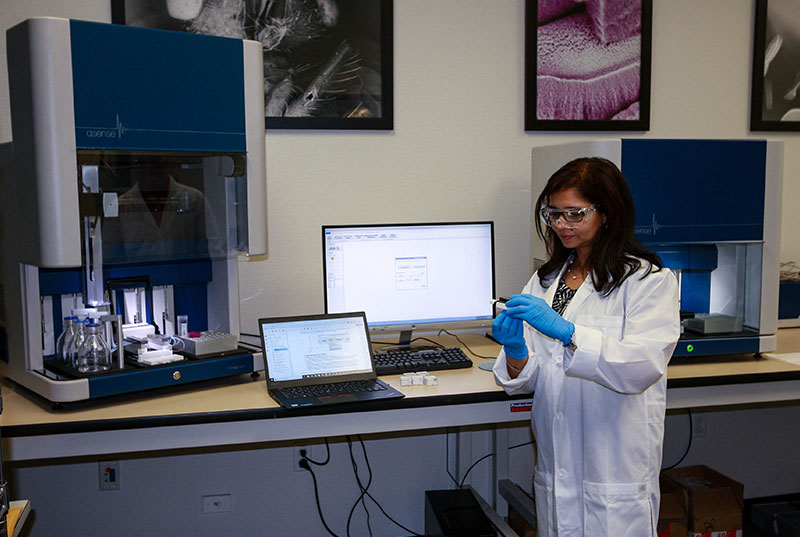Quartz Crystal Microbalance with Dissipation (QCM-D)

QCM-D Analysis
Quantitative Surface & Interface Contamination
Qualitative analysis such as visual inspection of a surface lacks quantitative data. For example, understanding how cleaning agents are performing, from removal rates to total mass removal, is vital to the development of products from CMP Slurries to surfactants in dish detergent. Quartz crystal microbalance delivers quantitative data on how surface and solutions interact at molecular levels, bringing quantitative data to some outdated qualitative testing procedures.
Materials
Compatible with aqueous and non-aqueous solutions and aggressive solvents. Example compatible solvents:
- Diluted crude oil
- Toluene and other aromatic hydrocarbons
- Hexane and other alkanes
- Tetramethylammonium hydroxide (TMAH)
- Ethanol and other alcohols
- Hydrochloric acid and other acids
- Sodium hydroxide and other bases
- Dimethylformamide (DMF)
- And more! (inquire about your application)
Application Examples
- Protein interaction with container/packaging
- Biomolecule interactions with surfaces
- Flavor and fragrance intensity evaluation
- Detergency effectiveness and surface cleanliness
- Cellular interactions in solution and surfaces
- Quantitative polymer cross-linking
- Biomolecular binding kinetics
- Chromatographic detection
- Viscoelastic modeling
Standard Capabilities
- Up to eight measurements can be performed in parallel
- Minimum liquid sample volume: ~300 μL
- Temperature range: 15-150 °C +/- 0.02 °C
- Typical flow rates: 25-300 μL/min
- Normal mass sensitivity in liquid: 1.8 ng/cm2
- Normal dissipation sensitivity in liquid: 0.110-6
- Maximum time resolution (running one sensor and one frequency): 10 ms

Available Modules
Standard flow module:
PTFE module:
Replaces the titanium flow path of the standard flow module with PTF for flow or stagnant measurements where the reagents or molecules are sensitive to interactions with titanium.
Ideal for research on:
- Nanoparticle interactions
- Protein interactions
- Surfactant and detergent interactions
- Biomaterial screening
- Hydrolysis
- Asphaltene adsorption
Humidity module:
To study film interactions such as swelling in contact with different vapors and relative humidity.
Ideal for research on:
- Film and coating hydration
- Polymer swelling
- Food science
- Protein hydration
- Paper and print
- Cellulose
Contact Us
We are a multi-disciplinary laboratory committed to providing our expertise and efficient analytical services.

